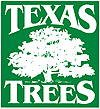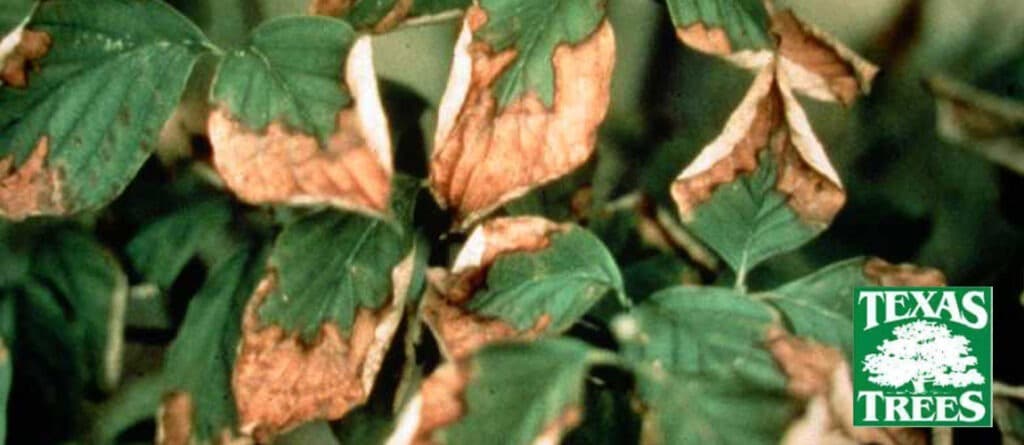What is Cedar Hawthorn Rust?
Cedar hawthorn rust is the most common phenomenon of all Dallas tree diseases that occurs mostly in mid-summer or spring. It attacks the plants in moisture-prone areas in your garden. This is a fungal infection of the trees, caused by the pathogen Gymnosporangium globosum. It mostly attacks the Hawthorn and Junipers. It is essential to perform spring tree care because the fungus infects the tree, it can rarely recover from the damage.
How Cedar Hawthorn Rust Affects Your Texas Trees
The moist environment helps the fungus to grow. Usually, it travels from one tree to another to survive, and find a new host after regular intervals. (Like it can move to the Junipers in your garden from the Hawthorns). As these fungi come from a very resistant species, it is almost impossible to get rid of them once they get a grip on your precious greeneries.
This plant pathogen is a heteroecious rust fungus meaning it requires a minimum of two hosts to complete its life cycle. In the primary stages of the life cycle, the pathogens infect eastern red cedar, rocky mountain juniper, and other common junipers in your garden. At the same time, the latter is prone to affect Hawthorne, Apple, and sometimes the Pear, and quince trees as well.
In early spring, it spends parasitizes in the primary host plant, and mid-summer releases spores from the telia, which occurs in the secondary host plant. You can see yellow or orange drying brown and black in the leaves of the plants. Spores from the junipers travel through air or water during the early morning or midnight time. If the landing spot is wet and moist the spores easily penetrate them.
Symptoms of Cedar Hawthorn Rust
Cedar Hawthorn rust infects fruits and green sprouts, distorting the growth to some extent. You can see bright yellow or orangish spots on Hawthorn Apple leaves during summer. If leaves may desiccate, drop prematurely, and turn on deciduous trees and shrubs. The pathogen-infected Junipers develop small roundish galls (1/8 to 9/16 inches in diameter), which slowly grow onto twigs and are reddish-brown in color. Cedar-hawthorn rust galls may often cause the death of infected evergreen sprigs.
Small yellow spots are seen in Junipers in the early days of infection, which later turn to orange color and have black dots in the center of the lesion. Aesia, more popularly known as cluster cups, is produced 80 to 90 days after infection. Hawthorne fruits may also exhibit rust-colored fingers. During the rainy days of spring, these galls expand into gelatinous cones. However, the symptoms may vary in different hosts.
Cedar Hawthorn Rust Treatment
Our experienced professionals at North Texas Trees help you in preventing Cedar- Hawthorne rust in your garden. The curing procedure for once-affected plants is not as simple as the rust is persistent and very much pestiferous. Contact us as soon as you see the galls in your Hawthornes for spring tree care (specifically in winter and early spring). Our texas tree surgeons make sure that they remove all appropriate galls from the foliage.
Sometimes, it is necessary to remove an entire branch to save the rest of the tree. We remove infected twigs and fruits as much as possible without harming the non-infected ones. Susceptible Junipers are challenging to avoid growing near the Hawthorne trees. And spores produced in galls can spread as much as 15 miles away from the source to infect the Hawthornes. We ensure the air circulates freely through the risk-prone plant areas to reduce moisture.
The Role of Weather Conditions in Cedar Hawthorn Rust Outbreaks
Understanding the environmental factors contributing to Cedar Hawthorn Rust outbreaks is crucial. Weather conditions, especially moisture levels, play a significant role in the proliferation of the fungus. Tips for adjusting watering schedules and promoting better drainage are discussed to create an environment less conducive to the growth of the fungus.
- Impact of Rainfall: Excessive rainfall, common in spring, creates a favorable environment for Cedar Hawthorn Rust. The section details how rain facilitates the dispersal of spores, emphasizing the importance of monitoring weather forecasts for potential outbreaks.
- Humidity Management: High humidity levels contribute to the persistence of Cedar Hawthorn Rust. The content explains how the fungus thrives in moist conditions and offers insights into humidity management strategies.
Natural Remedies and DIY Prevention Techniques
In addition to professional tree care services, natural remedies and DIY prevention techniques can complement traditional treatments.
- Neem Oil and Garlic Sprays: Natural substances like neem oil and garlic have proven fungicidal properties. The content explains how these substances can be used to create DIY sprays that act as preventive measures against Cedar Hawthorn Rust.
- Beneficial Plant Pairing: Certain plant pairings can deter the spread of Cedar Hawthorn Rust. This part explores companion planting strategies, explaining how selecting tree and plant combinations that naturally repel the fungus can contribute to a more resilient garden ecosystem.
- Enhancing Soil Health: Healthy soil is the foundation of a thriving garden. The content outlines practices for improving soil health, such as organic amendments and proper mulching.
How Texas Tree Surgeons of NorthTexasTrees Can Protect Your Trees from Cedar Hawthorn Rust
For future advancement, we plant Cedar Hawthorne-resistant juniper varieties. These are the precautionary measures we can take before the fungus is spread all over your garden trees. For proper cure and maintenance, the North Texas Trees crew usually applies fungicides when the Juniper’s galls start producing gelatinous cones. Chlorothalonil and mancozeb are verified to be used as fungicides for Hawthorne. We begin spraying when the buds begin to break open and repeat at regular intervals until the petals fall. We do not risk spraying fungicides in the Junipers directly because it causes visible damage to the plants. Spring and early summer is the perfect time for applying fungicides. For the Juniper’s infection, we may use the Bordeaux mixture during the mid-summer.
If you ever notice this kind of spring tree diseases like Cedar Hawthorne rust crawling slowly to infect your precious plants, call us in for spring tree care to seek our affordable and professional services.
North Texas Trees has the best doctors for Dallas Tree Disease
The NorthTexasTrees is the #1 family-owned business in the Dallas FTW area with more than 35 years of experience and certified experts. Our professional crew of texas tree surgeons makes sure of the excellent tree services in the Dallas and Fort Worth area. We are the trusted tree service providers to make your garden rust-free, healthy and happy.
Before You Go!
The recommended fungicide Cedar hawthorn rust treatment procedure must be followed and handled by experienced professionals. Cedar Hawthrone is the most severe problem of all Dallas tree diseases that can shave off your garden greenery. And if not appropriately treated, the plants will go dead with no chance of regaining the previous state. Cedar-Apple rust and Cedar-Quince rust is also followed by a similar group of pathogens and are deadly spring tree diseases. We recommend you take essential measures because we are just one call away.
Understanding the nuances of Cedar Hawthorn Rust and its impact on Texas trees is crucial for effective prevention and treatment. At North Texas Trees, our seasoned professionals specialize in comprehensive spring tree care, offering tailored solutions to safeguard your garden from this persistent fungus. From proactive measures like planting resistant juniper varieties to meticulous applications of fungicides during critical stages, our team ensures a strategic approach. We prioritize the health of your trees, addressing the early signs of infection, and implementing measures to curtail its spread. Trust North Texas Trees for expert guidance, dedicated service, and a rust-free, thriving garden. Call us today to fortify your trees against Cedar Hawthorn Rust and other spring tree diseases.

